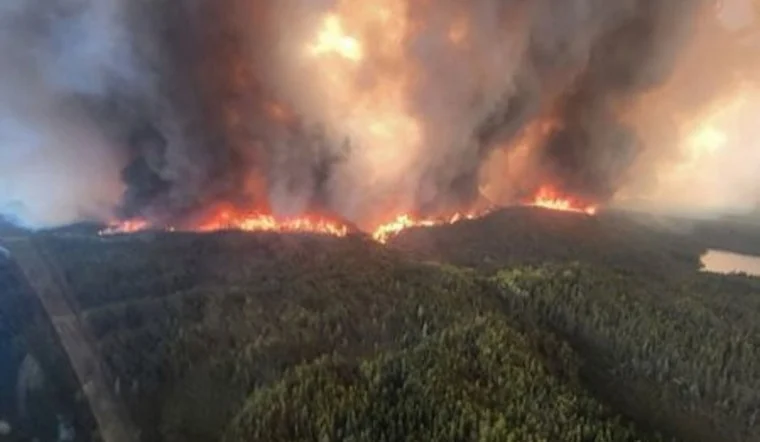Canadian Smoke, 90° Heat, and Severe Storms: Illinois Braces for Midweek Weather Turmoil
June 2, 2025 — Chicago, IL — Illinois residents are being urged to prepare for an intense midweek weather trifecta: lingering smoke from Canadian wildfires, sweltering 90-degree temperatures, and the threat of severe thunderstorms. The volatile mix is expected to grip the region by Wednesday, prompting air quality alerts and storm readiness advisories from local and state officials.

According to the National Weather Service (NWS), a plume of wildfire smoke drifting down from Ontario and Manitoba will settle over parts of northern and central Illinois by Tuesday evening. While not as thick as last summer’s historic haze, the smoke is expected to degrade air quality, especially in urban areas like Chicago, Rockford, and Peoria. Those with respiratory issues — including children, seniors, and individuals with asthma or heart conditions — are advised to limit outdoor activity.
Meanwhile, a stubborn dome of high pressure is causing temperatures to soar. Forecasts predict highs reaching into the low- to mid-90s across much of the state, with humidity pushing heat index values near or above 100°F in southern and central regions.
“This is a dangerous combination,” said NWS meteorologist Laura Franklin. “High heat and poor air quality can pose serious health risks, particularly to vulnerable populations. And unfortunately, the arrival of a cold front Wednesday night is expected to bring a new round of severe storms.”
That cold front is likely to trigger strong thunderstorms across the state late Wednesday into early Thursday. Forecasters warn of potential for damaging winds, large hail, and even isolated tornadoes, especially in western and central Illinois. Flash flooding is also a concern, with heavy downpours anticipated in already saturated areas.
What Residents Should Do:
-
Check air quality updates from the Illinois Environmental Protection Agency (IEPA) before spending time outdoors.
-
Stay hydrated and cool. Heat-related illnesses can develop quickly — drink water, wear light clothing, and limit strenuous activities during peak afternoon hours.
-
Prepare for storms. Secure outdoor items, have a flashlight and emergency kit ready, and ensure mobile devices are charged in case of power outages.
-
Follow local alerts. Pay attention to advisories from the NWS and local emergency management agencies.


Comments are closed, but trackbacks and pingbacks are open.